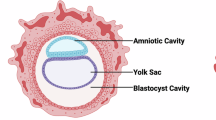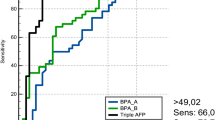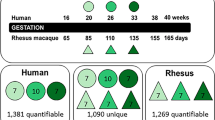Abstract
Summary: Hypoxia is a potent stimulus to the release of vasopressin in fetal sheep and, in turn, plasma concentrations of the hormone correlate inversely with fetal oxygenation. Because the fetal kidney contributes to vasopressin clearance, we propose that measurement of increased amounts of vasopressin in amniotic fluid would be indicative of fetal hypoxia. We therefore measured concentrations of vasopressin in amniotic fluid under resting conditions, during and after fetal hypoxia, and with intravenous and intra-amniotic administration of vasopressin in 15 chronically instrumented fetal lambs 111–141 d gestation. In the resting state mean (±SE) vasopressin concentrations in amniotic fluid (1.6 ± 0.3 pg·ml-1) did not differ from those in maternal (1.4 ± 0.4 pg·ml-1) or fetal (1.8 ± 0.2 pg·ml-1) plasma. After exposure of the ewe to 10% O2 or partial occlusion of the umbilical cord, vasopressin concentrations in fetal plasma increased significantly (P < 0.001) to 200 ± 59 pg.ml-1 with a delayed increase in amniotic fluid concentrations (P < 0.03) to 15.8 ± 4.5 pg.ml-1. This rise in concentration of vasopressin in amniotic fluid was sustained for at least 24 h and levels at that time were highly correlated with peak plasma concentrations (r = 0.83, P < 0.001). Intravenous infusion of vasopressin into the fetus was accompanied by an equally significant (P < 0.02) and sustained increase of vasopressin in amniotic fluid. After intraamniotic injection of vasopressin, levels remained increased for at least 24 h.
In the third trimester of ovine gestation amniotic fluid vasopressin concentration was a reliable indicator of prior fetal hypoxia. Parallel amounts of antidiuretic activity measured by bioassay and vasopressin by radioimmunoassay confirmed the presence of active hormone in amniotic fluid. Hypoxia alone was not a stimulus to passage of meconium and increased concentrations of vasopressin in fetal plasma were not associated with expulsion of meconium in utero. Despite elevated concentrations of vasopressin in amniotic fluid, no associated changes in intra-uterine pressure were discerned.
Similar content being viewed by others
Log in or create a free account to read this content
Gain free access to this article, as well as selected content from this journal and more on nature.com
or
Author information
Authors and Affiliations
Rights and permissions
About this article
Cite this article
Stark, R., Daniel, S., Kazim Husain, M. et al. Vasopressin Concentration in Amniotic Fluid as an Index of Fetal Hypoxia: Mechanism of Release in Sheep. Pediatr Res 18, 552–558 (1984). https://doi.org/10.1203/00006450-198406000-00016
Issue date:
DOI: https://doi.org/10.1203/00006450-198406000-00016



